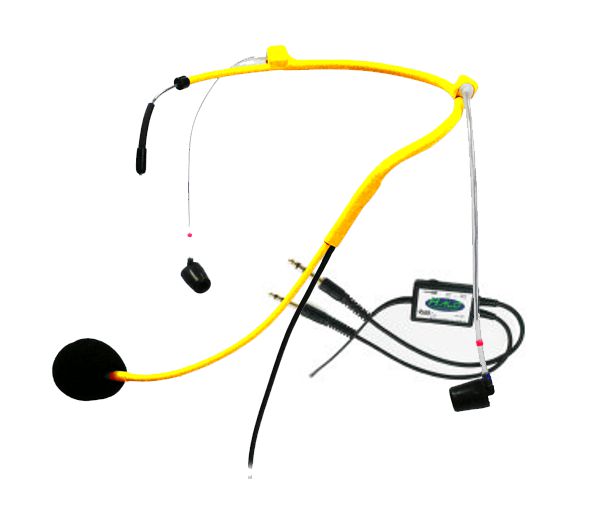Ask Me
What's the difference between the HaloTubephone and the "other guys"?
 |
Soft malleable-wire headband The soft headband wire can be easily bent or stretched into any shape to accomodate any lump or bump on the noggin. If there is any pressure point, simply reshape the headband with a gentle pressure between the thumb and fore finger. The headband wire on the "other guys" headset is made from a stiff spring steel, and cannot be easily re-shaped. If theirs fits, then great...if not, well... Speakers located away from the ear canal Speaker location is very important to reliablity. Sweat and earwax is produced naturally from the ear and migrates to the sensitive speaker components where they cause problems. Speakers that are located in close proximity to the ear canal by only a foam ear tip are very prone to blockage. Once blocked with vaporized sweat/cerumen, there is little the pilot can do except to send the headset back to the manufacturer for repair. The pilot can see the sweat before it becomes a problem through the clear tubes, and they can be easily replaced by simply pulling the tube off and replacing them when needed...even in flight. Replaceable sound tubes (no wires to fray or break) Sound tubes do not contain wires as in the other guys headset. No electrical signal needed to the ear, so wires won't break or fray from inserting them in and out of the ear canal. (By the way, less sound enters the ear through the tubes than enters the ear via the foam ear tip.)
Separate volume controls for each ear. Good for those with unilateral hearing loss. The competition uses a set-screw balance control.
Gold-Plated audio plugs
The adustable headset rod can be extended to fit ANY size head. Pull out for a larger fit, push in for a smaller head. Easily re shape the headband to fit any noggin'. |
Do I need custom earmolds?
No...Custom earmolds are not recommended for the following reasons...
- They take time and effort to get
- A FULL 30% of all earmolds leak somewhat. The noise spectrum that enters the ear canal with small leaks are the low frequencies...engine noise.
- IF you get a good seal, that means it is a pneumatic seal trapping air between your eardrum and the ear mold. This pressure is noticed when climbing or descending between various altitudes
- The cost ranges from $80 to $200 / pair making the experiment an expensive one.
Stick with the foams if at all possible. Get customs only if your ear canal will not accept foam tips or you simply cannot get them in.
Are they really as quiet as you claim?
Yes! However the HALOTubephone is an EARPLUG and not an EARBUD and must be inserted properly to have full noise quieting and fidelity. There is a video showing the proper insertion technique on the SUPPORT pull-down menu at the top of this web page.
What is the difference between the regular and low gain mics?
The low gain mics are for ERJ/CRJ commuter aircraft ONLY!!!. The gain has been dropped very SLIGHTLY (6dB) for intercoms that cannot be turned off (no squelch or mute) - otherwise known as "HOT" mic systems. It is NOT recommeded to get a low mic gain in noisy aircraft. The Low mic gain option is made available to keep your co-pilot happy in overamplified intercom systems such as the ERJ/CRJ.. If you are unsure what mic to order, PLEASE ORDER THE REGULAR microphone option!!!
Will the low gain mic work on other non-ERJ/CRJ aircraft?...YES! You will need to have the mic slightly closer to your lips, but yes...they will work just fine.
( Please note that while we provide this option to commercial pilots, the current version of the Halo is not TSO certified for 121 or 135 operations. )
What aircraft does the HALOTubephone NOT work with?
MD-80 and MD-88 INTERPHONE (crew and passenger PA) systems are incompatible with the HALO Tubephone (and many other headet microphones as well). Use with the radio and intercom for communications are fine.
